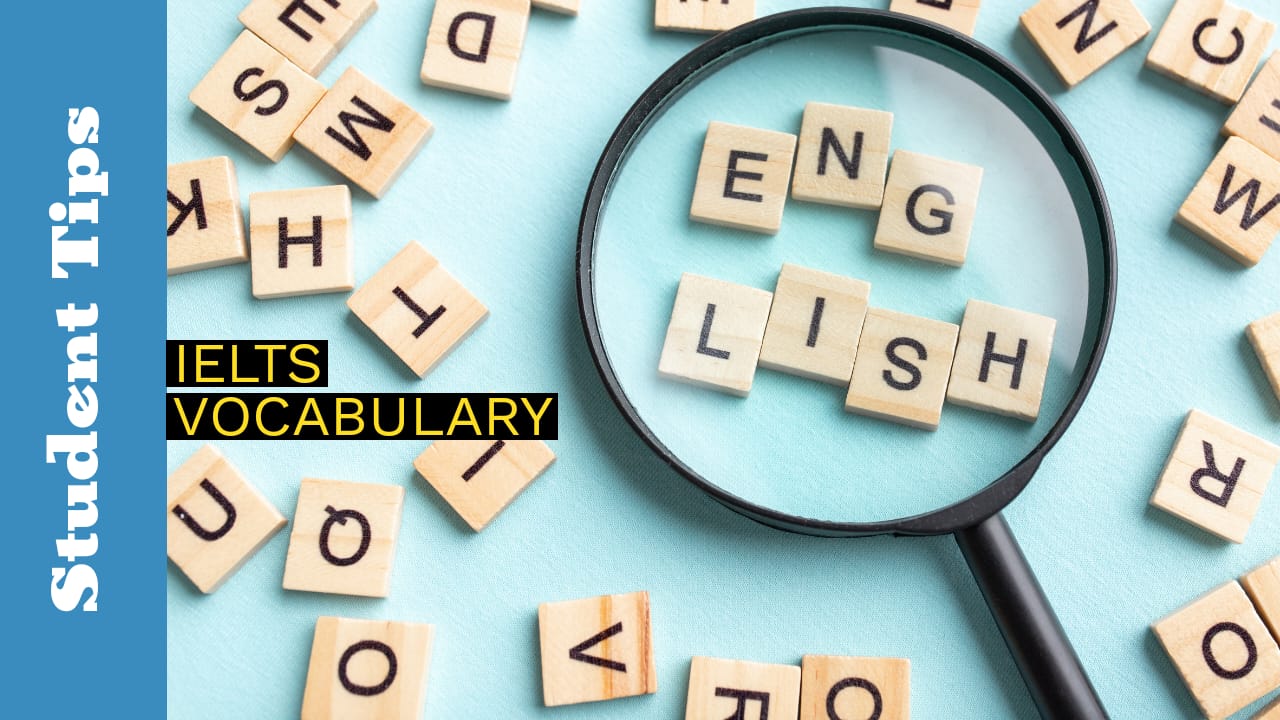As a teacher, I have always emphasised to my students the importance of having a good grasp on vocabulary before attempting the IELTS test. By that I don’t mean knowing a dictionary by heart, but just enough synonyms to allow them to navigate between topics without having to use the same words over and over again. This is beneficial as “lexical resource” is a part of the criteria for marking in both speaking and writing.
I have recently had a conversation with someone who made me think about the usefulness of having a bank of words and also of using them at the right time.
During the conversation I asked ‘What do you like to read?’ and he replied “stories, tales”. As a teacher and literature enthusiast I immediately began thinking about books for young adults or fantasy and expected to hear words such as story, plot, characters, hero, novel, romance, action, sci-fi, which we normally use to describe books or movies. But as the student developed his answer I did not hear any of those words or connected ones, nor was I entirely able to grasp the actual topics of the books. Just to make sure I hadn’t missed anything, I then asked about the genre of the books, also including examples such as adventure or comedy. My question did not have the desired effect, which was to trigger vocabulary to describe subjects or characters.
At the end of the discussion I realised what was so unusual about the student’s response. He spoke in long, convoluted sentences in which he used multi-syllabic words that were not entirely appropriate for the context. Moreover, some were mispronounced (and correct pronunciation of words does count in the marking of speaking). Furthermore, the speaker did not actually clarify what the “stories” and “tales” were about and the only thing clearly related to the question was an author name.
Keep in mind that the questions in the speaking test are not meant to confuse candidates but to give them the chance to showcase their vocabulary base. If this answer had been given in a real exam situation, it may not have brought a good enough score. Other than a few words related to the topic, the speaker seemed unaware of the kind of language that was expected of him.
I always advise students to take the time to prepare before the exam. They should always have a look at books with past papers or practice papers and try to answer the questions provided. Also, they should read as much as they can on any topics they find interesting. It will help to acquire new vocabulary as well as improve sentence structure.
You can find more information about the IELTS exam, the marking criteria, the types of questions and how to organise your responses in my eBook “The IELTS for Beginners Second Edition” available on Smashwords ( https://www.smashwords.com/books/view/578754 ), iBooks and other eBook retailers.
Adriana Mucea
IELTS Writing
By Adriana Mucea
If there was a World Cup of the most disliked part of an English language exam, the IELTS Writing would probably win very often. Nowadays, when studying a foreign language people often put little emphasis on the skill of writing and more on speaking or listening. So when it’s time for the IELTS, writing about virtually unfamiliar topics in a limited amount of time only makes things worse. When I walk into a classroom and only mention a writing task I can already see the annoyance on the students’ faces and I know exactly what the first question is:
What do I write about?
Keep in mind that you don’t have to be experts in all fields to be able to write 150 words for task 1 and 250 words for task 2. For the essay in particular, you are allowed to use your own experiences and knowledge so you can bring information from your own country or from an article that you read in a newspaper or a documentary you watched on TV.
Before the test day make sure you practise writing answers for as many questions as you can. The old-fashioned saying “practice makes perfect” really applies to the IELTS. Also you should try to watch TV, listen to the radio or read newspapers in print or online. This will help you get some more ideas and you might also learn some new words to add to your vocabulary.
On the day of the test it is extremely important that you read the questions (rubrics) carefully. Read them two or three times if you need to and underline key words if it helps. It is essential that you fully understand the questions, especially for task 2, the essay. The next step is to write down all the ideas that go through your head then choose two or three that you can fully develop into paragraphs.
As soon as the issue with ideas is dealt with, the students move on the inevitable next question:
How do I write?
Many people who have not written anything important since school have probably forgotten that any piece of writing must have an introduction, a body and a conclusion. In marking terms this is called task response or task achievement. So simply starting by answering your question will not bring you many points. The markers are also looking for a piece of writing in which the paragraphs are logically connected so you have to make sure you use the correct linking words. Keep in mind that every new idea has to be written in a separate paragraph.
Another marking criterion is lexical resource, which simply means vocabulary. The marker wants to see a good range of vocabulary, from simple, everyday words, to more complex, topic-specific ones. But using fancy 3- or 4-syllable words in the wrong context will not get you a higher score. So, if you’re writing the answer to the General Training task 1, the letter, and you’re writing to a friend then your words should be less formal. However, if you’re writing to a potential employer formal vocabulary is needed.
Other things that require attention are grammar and sentence structure. Using simple tenses (such as the present and past tense) and short sentences with only one verb is not always to your advantage. Before the test, take some time to revise the grammar of English and when practicing try to write longer, more complex sentences involving more tenses.
Completing the two tasks within an hour is not impossible, it just takes practice, in some cases a lot, and a firm grasp of vocabulary, grammar and connecting words.
You can find more information about the IELTS marking criteria, the types of questions in the Writing section and how to organise your responses in my eBook “The IELTS for Beginners Second Edition” (https://www.smashwords.com/books/view/578754) available on Smashwords, iBooks and other eBook retailers
Structuring essays.
Many students studying for the IELTS exam are put off writing essays because they’re not sure where to start. It is important to understand the correct formatting and structure for an essay. Writing an essay isn’t easy, especially when you haven’t had much experience with this type of writing in the past.
INTRODUCTORY PARAGRAPH
The truth is, this is relatively simple. The introduction should always follow the funneling method of starting broad and narrowing it down.
– Broad Statement
Start with a broad statement such as “throughout the world today, x has been a common facet of society…” This will begin your essay
– Narrow down to a idea
Once you start broad, narrow it down to an idea. This will define the context that you are referencing. It will also let the reader know that you are focusing on an idea rather than broadly skipping around. A Idea is optimal for this section.
– Statement
This is very tricky for many IELTS students, but statements are relatively easy when broken down into types.
For argumentative statements, these forms are brilliant to use and include examples to break down the logical thinking:
……While X is true, Y is more true.
“California, specifically, was a pioneer in developing a sophisticated judicial process for determining guilt and then punishment for potential death row inmates. However, there is still substantial debate surrounding the legitimacy and overall fairness of the process of sentencing convicted criminals to death in California.”
…….Because of A, B and C, Z happened.
“Implementing strategies that utilize organizational justice, workforce unity and employee development were all highly influential ways to motivate workers in diverse settings.”
And there you go, the above statements follow a real formation structure in terms of their layout. Therefore, they plan out the structure of the rest of the essay.
BODY PARAGRAPHS
Body paragraphs are also pretty standard in terms of their overall structure. The whole point of most body paragraphs is to introduce evidence that supports your statement
– Topic Sentence
This is a mini-essay that tells the reader what the body paragraph is about.
– Background Information
This is either relevant information, introducing a source or merely explaining to the reader what the context of the evidence is.
– Introduce 2-3 Facts or Quotes
Use 2-3 citations and use the evidence of the sources that you have compiled. Make sure to introduce them and do not simply “drop” the quotes as if they are standing alone.
– Explain the Quotes
This is a part of the body paragraph that many students miss. Since your evidence does not speak for itself, explain what it means in your own words. Reiterate the main point and summarize it if need be.
– Relate to the Essay
This is the most important part of the body paragraph. Make sure to take your evidence and points and relate them back to the essay. That is, explain why this evidence that you argued for in your mini-essay is relevant and adds value to your argument (main claim).
CONCLUSION
In conclusion, you want to recap your argument and be relatively sufficient in touching on only the main points.
Voila! You are now on your way to completing your essay. This formula for writing is proven to work and follows a format that is easy for examiners to read.
Appropriate Language and Sentence Structure for Academic Writing
Have you ever said this during a college writing project? “I want to connect with the audience but can’t use first person language or personal pronouns.” We’ve all experienced this feeling. After all, everyone wants their paper read and ideas listened to, but – let’s face it – academic writing is one of the driest forms of communication. Paragraphs are wordy, and, at best, there are few graphics that appeal to the eye. But all is not lost; a few quick sentence changes and language overhaul can convert your paper from zero to numero uno. This sample English paper explores college writing tips.
Don’t speak like Yoda; use active voice
Examiner’s often complain essays lack interest. One of the main culprits for this is passive voice. Passive speech happens when a verb is acted upon by the subject.
Think Yoda from Star Wars – “Powerful you are.” He simply could have said, “you are powerful.”
Passive voice makes it difficult to read and follow the writer’s thoughts. Take these two academic samples.
Incorrect: “This approach is an improvement on Smith’s design,”
Correct: “This approach improves Smith’s design.”
See the difference? Examiner’s may stumble with the passive language, and they may be distracted from the next, more important thought.
Organize your essay into easy-to-navigate sections
Research papers not only drone on forever; they also take up a lot of space. Master’s thesis and doctoral dissertations easily increase the paper’s word count to more than 15 to 30 pages. One popular strategy is to break up major points into subheadings. For example, let’s say your professor asked for a 15-page research paper about international currencies and their impact on the American dollar. Students could formulate their paper based on the following headers and sections:
England (H2 Heading)
History (H3 Heading)
Recent Trends (H4 Heading)
Impact on American Dollar (H5 Heading)
The italicized sections would supplement each country’s heading, and students can use as many countries as they need to fill up 15 pages. And, not only does this break the information into more manageable chunks, the headers and sections help students organize their paper and serves as a working outline.
Go with the flow
Students may remember writing the five-paragraph style in English Composition 101. Well, this wasn’t just a short-term technique to teach you how to write academic papers. Many professional researchers often use this system. For each separate thought, introduce the topic with an explanation – similar to the introduction paragraph and/or thesis statement. You should include at least three supporting statements. Next use at least three distinct paragraphs to discuss those supporting statements and evidence, and follow up each topic with a closing paragraph to make the transition tighter.
Let’s say your research paper is about newspaper convergence in the past twenty years. You would more than likely include a section about social media. This strategy would complement the social media breakdown, and each platform would have a separate five-paragraph system. For example, you may choose Twitter as your first medium of communication. The five paragraphs could be structured as follows:
Introduction to Twitter as a news conveyor
Evidence showing news outlets have increased their Twitter usage
Evidence showing more people are using Twitter for news searches
Examples showing how Twitter is best used to report the news
Closing/transitioning paragraph
Master and doctoral candidates also can use a similar strategy. However, each evidence will need to include supporting facts and statistics, studies, pros and cons, and other solidifying information. Each backup point would need an additional paragraph.
Additional Reading: The Biggest Writing Fails
Consider yourself an investigator
Have you ever watched Law and Order: SVU on TV? Detectives often use specific, defined terminology and definitions to explain evidence and strategies. The producers rely on these descriptions to prevent the audience from getting lost in the babble and changing the channel. The same is true for research papers and essays. There are two easy rules to remember when avoiding vague words or over-educated terminology.
Avoid vague words
Don’t use vague pronouns: it, they, those, them, etc. These words often leave readers wondering what you are describing. Be more concise. Say what you mean.
Vague: New York’s Police Department voted to deny police officers an increase to overtime pay. It costs the department too much money.
Concise: New York’s Police Department voted to deny police officers an increase to overtime pay. Leaders said the increase would cost the department too much money.
Say it in a few words
Okay, everyone likes to expound on a subject and show they know what they are talking about. But if you really want your reader to believe you; they have to understand the words. Using more words that necessary not only makes the readers tired, it prevents them from absorbing the information. A sentence should never go above 25 words. But the shorter the better.
Too Long: The professor demonstrated some of the various ways and methods for cutting words from my essay that I had written for class.
Just Right: The professor showed me how to cut words from my essay.
If you need to include more than 25 words, try to break sentences up using semicolons and conjunctions.
Confusing: The professor demonstrated some of the various ways and methods for cutting words from my essay that I had written for class.
More Concise: The professor was concerned about my essay’s length, and he demonstrated some of the various ways and methods for cutting words.
By healthyyyyplus@gmail.com
and
Adriana Mucea






